Steve’s Story.
The story of Steve’s Shuttle is the story of its founder, Steven Verhoeven. Although it is unique to him, Steve’s story is typical of the fortitude and steely resolve displayed by many Christchurch small business owners in the aftermath of a major natural disaster. This is intended as a tribute to them, as well.
In 2007, after fifteen years of travel and good living in San Francisco, Steven Verhoeven was drawn back to New Zealand and his home town of Christchurch. He got a job working for JBC Travel, owned by John and Bridget Cameron, specialising in tourism transport. Steve was good, very good, at his job. He looked after tourists from all over the world, showing them the wonderful attractions of Christchurch. He quickly became well known for his cheerful nature and infectious enthusiasm.
But Steve had a dream. He had always wanted to own his own business and now was the time. He summoned the courage and met with his employers to discuss his idea for his own business and self employment. He asked them if they would support him into his venture by leasing him a vehicle for four hours a day. For the other four hours, he would work for them. It was agreed, and in late 2009 “Chocks Away” airport shuttle was born. A beat up, rusty and only just road legal luggage trailer was purchased and attached to the leased van.
Advertising for Steve’s airport service was placed in all of John and Bridget’s buses. Bookings came in immediately and Steve was out of bed and on the road by 3am most days transporting his coveted customers to the airport in all weathers. Later in the day he would remove “Rusty” the trailer from the leased van and go to work for John and Bridget.
Within just a few weeks, Steve’s new venture was so busy he was turning business away. What to do? Reluctantly John and Bridget let their star employee go his own way but agreed to support him as a business partner. Steve knocked on doors all over town, introducing himself to every hotel, motel and hostel proprietor who would listen. He told them he had the best value, best service and most reliable airport transfer service in history. What struck them most about Steve was that he seemed to sincerely believe his own sales pitch. And he did. However, as with all “cold calling”, Steve had the door shut in his face a few times. But most gave Steve a chance to prove himself and began to steer business his way.
It was at this stage that the Company catch phrase “Champagne service on a beer budget” was coined and a loan was secured to purchase a second hand eleven seat van with luggage trailer. Next came a free phone 0800 number and then bright yellow pavement signs were purchased and strategically placed in Cathedral square to drum up more business. A contract with the Isite visitor centre was secured and a business Logo designed and applied to the new van.
John and Bridget took all the calls and ran the office in addition to running their own business. By now the business had gone through a few name changes. The romantic “Chocks Away” just didn’t seem to fit and anyone under 60 years of age was always wanting an explanation. For a while it was simply known as “Airport Shuttle”. But Steve was always searching for a better name. In the end it was John, tired of Steve pestering him about it, often late at night, who declared “mate, just call it Steve’s shuttle”. The simplicity of the idea seemed to resonate and the name was adopted and remains to this day.
Within a year of starting out, Steve’s Shuttle had purchased a second van and taken on a full time employee. It was at that stage the decision was made to keep the business small and to concentrate on delivering a quality service to a manageable quantity of customers.
Steve always wanted to be in the drivers’ seat, literally, and have the day to day contact with his passengers that he enjoys so much. He has no interest in being in the office, detests anything to do with bookwork and loves nothing more than “the smell of diesel in the morning” as he puts it. Today, a third vehicle and a part time employee makes up the small, hands on Steve’s Shuttle team. There are no plans to expand beyond this boutique stage.
The Earthquakes.
Steve’s Shuttle has survived and prospered through the most calamitous event not only in the history of our beautiful city, but in the history of our country. On the 4th of September 2010, Christchurch, a city of nearly 400,000 people, was jolted awake at 4.36am by a 7.2 magnitude earthquake. As a result there was considerable damage within the city, but no loss of life. However, a few months later, at 12.51pm on the 22nd of February 2011, another massive earthquake struck Christchurch. This event was far more destructive and tragically 181 people were killed. Many more suffered serious injury.
In the days following this vicious act of mother nature, amazing acts of heroism and selfless courage were witnessed as teams of men and women worked around the clock to rescue those trapped in collapsed buildings. Vast areas of the city were devastated. The whole of the central business district was declared a no go red zone and closed to all but authorized persons.
When this earthquake struck, Steve was enjoying the first few mouthfuls of lunch in the South City mall food hall. He clung to the table as the shaking caused his bowl of hot food to spill onto one hand, scalding him. The whole building seemed to shriek with a high pitched metallic squeal as steel girders contorted, twisted and buckled, sending a shower of ceiling panels down on the lunch time diners. Grabbing his unopened can of Sprite, Steve ran outside into the safety of open space. Across Colombo street he saw the dust rising and billowing from a multi storey parking building that had collapsed just moments before.
As he was only able to view the immediate area around him, he dreaded the prospect of what lay beyond in other parts of the city. His first concern was for loved ones. Were they safe? So many thoughts raced through his head as he found his car and attempted to drive through the car park. Burst water mains had already flooded the exit area and Steve remembers the sight of suit attired businessmen wading through knee high water clutching lap tops to their chests.
At the same time, a few blocks to the west, Steve’s business partners, John and Bridget, were close to cathedral square when the 12.51pm quake struck. They saw the steeple of the cities most treasured building, Christchurch Cathedral, crash down into the square like a felled tree. Minutes later they came across the bronze statue of the cities founder, John Robert Godley, toppled from its plinth and lying face down on the cold cobbles. His proud and beautiful city, minutes earlier bathed in late summer sun, was now enveloped in the thick dust of fallen buildings and an atmosphere of distress as its citizens tried to make sense of what had just happened.
A particularly large aftershock twenty minutes later caused more buildings to partially collapse, emphasizing how vulnerable people were near structures . Hundreds, perhaps thousands of people were now gathered in the square, many covered in dust and bloodied from injuries. The whole city, New Zealand’s second largest, was in turmoil. Despite the utter chaos, most people were more deeply shocked than panicked. Some wept in quiet disbelief, others shared cigarettes and comforted each other. Many attempted to text or make cell phone calls, causing the system to over load and crash. Lines of cars, parked parallel to curb sides, lay pinned and crushed to half their height under the rubble of fallen parapets. Once beautiful and ornate, these parapets had earlier crowned the facades of the city’s Victorian and Edwardian buildings. They claimed many lives as they crashed into the busy pedestrian and traffic filled streets.
In the aftermath of what is New Zealand’s worst ever natural disaster, more than 5000 CBD businesses were shut down and up to 60,000 workers had either lost their jobs or were displaced. Within that central part of the city were most of the hotels, motels and hostels where Steve had worked so hard to earn trust and business. More than 90% of his established business was lost in less than 30 seconds as a result of that earthquake. As with many people, once they had established that family and loved ones were safe, Steve’s attention turned to his home and livelihood, to an uncertain future.
The following day, a Wednesday, Steve was back in action, determined to save his business and do what he could to help others. The airport was open and people needed to get in and out of Christchurch. Urban Search and Rescue specialists, medics, police and all other manner of emergency response personnel were pouring into the city. Steve transported many of them. A tented camp was set up in Hagley park for displaced tourists and citizens. With so many hotels now closed, there was a desperate need for temporary accommodation. Steve would later provide transport for many of these people to the airport.
What was already a very competitive transport industry was now extremely so. Only the strongest and most determined would survive. Some would, and did, lose the will to keep going in the face of seemingly insurmountable odds. Not Steve. This predicament just strengthened his resolve to keep going. He had sacrificed so much and worked too hard for his dream of self employment and independence to just give up. The thought never crossed his mind. Over the next few weeks and months he was knocking on new doors, his characteristic enthusiasm and optimism shining through in the grim atmosphere that pervaded post-quake Christchurch.
But the next few months would prove to be harder that he could ever have imagined. Christchurch, once a major tourist hub, suddenly had no tourists and tourism had been 90% of Steve’s business. Christchurch had changed, in places beyond recognition. Vast tracts of the city were inundated by silt, caused by liquefaction. This is a consequence of much of Christchurch being built on drained swampland. When a significant earthquake occurs, soil with a high moisture content liquefies and the water gets forced to the surface, carrying the silt content with it. This very fine, almost powdery grey substance was the bane of Christchurch after each significant aftershock. It would pour up from the ground and flood streets, invade gardens and low lying homes and property. Once the water drained away, whole suburbs were left under several inches of silt. In places it was metres deep. As a consequence, many streets were impassable for days and longer.
Some bridges were too damaged to cross. This made negotiating the city by vehicle extremely frustrating. Roads that were open one day were closed the next. What’s more, liquefaction silt is hard on vehicles. It invades brake drums, wheel bearings and axles. It permeates unpainted surfaces, causing them to rust extremely quickly. Steve even had to replace a clutch when one of his shuttles got stuck in a sink hole, the silt laden water seeping into the clutch housing. Close to a million tonnes of this silt was removed from the city, much of it shoveled from back yards by an army of volunteer students and farmers.
During the following eighteen months the aftershocks continued in Christchurch. Several magnitude 5 plus quakes were recorded as were thousands of aftershocks, more than 10,000! Seldom in human history has a population been so harassed by mother nature for so long. Understandably thousands of people left Christchurch during this time. Unconfirmed estimates are as high as 30,000. But there were many reasons to stay. Some remained out of a sense of loyalty to the city, many due to age or connection to home, family or business. Some stayed simply because they refused to be defeated by the stress and heightened anxiety. And for some it was a belief that out of despair and destruction will come new beginnings and opportunity. Steve stayed for pretty much all of the above reasons.
The winter that followed was particularly hard. Christchurch had two large snow falls within weeks of each other, each one causing schools and roads to close and making roads treacherous. The airport, such an important part of Steve’s business, was closed for some time as well. There were many days when Steve barely made enough to cover costs. But the slow days had a silver lining in that he had more time and opportunity to promote the business.
The spring months are looked forward to in Christchurch for the profusion of Daffodils and cherry blossom that brightens Hagley park, the cities enormous central public space. Steve can’t remember ever looking forward to spring as much as he did the one of 2011. The “year from hell” as he called it was nearly over and the effort he had put into marketing the business was paying off. By December the phone was ringing constantly and it was apparent there was enough work now to support a small team.
Tourists were returning to Christchurch, more than the cities limited accommodation could cater for at this stage. Steve had a fantastic summer and the business went into the winter of 2012 in a strong position. A new luxury van was purchased and at the time of writing (September 2012) Christchurch is entering a new and exciting stage. More hotels and backpackers are re-opening and Christchurch is on the road back to what it once was, one of the world’s great little cities.
The future is bright.
Today Steve’s Shuttle is a tight team of five dedicated people still adhering to the early principles of the business and one in particular, “Champagne Service On A Beer Budget”.

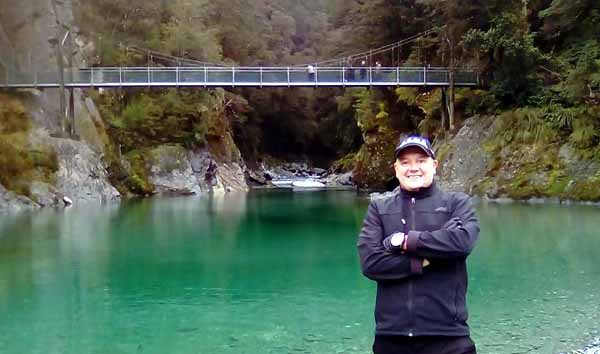
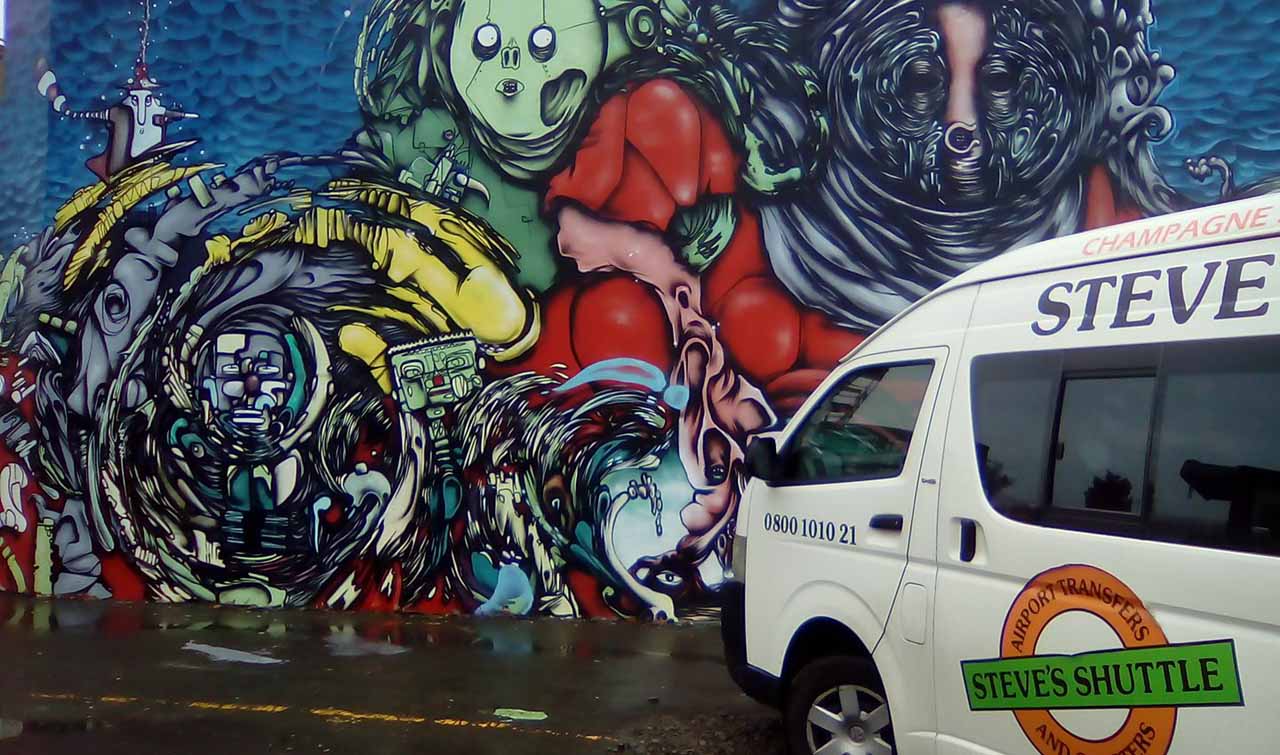
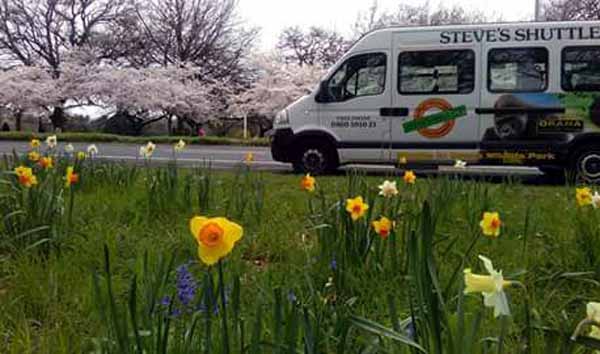
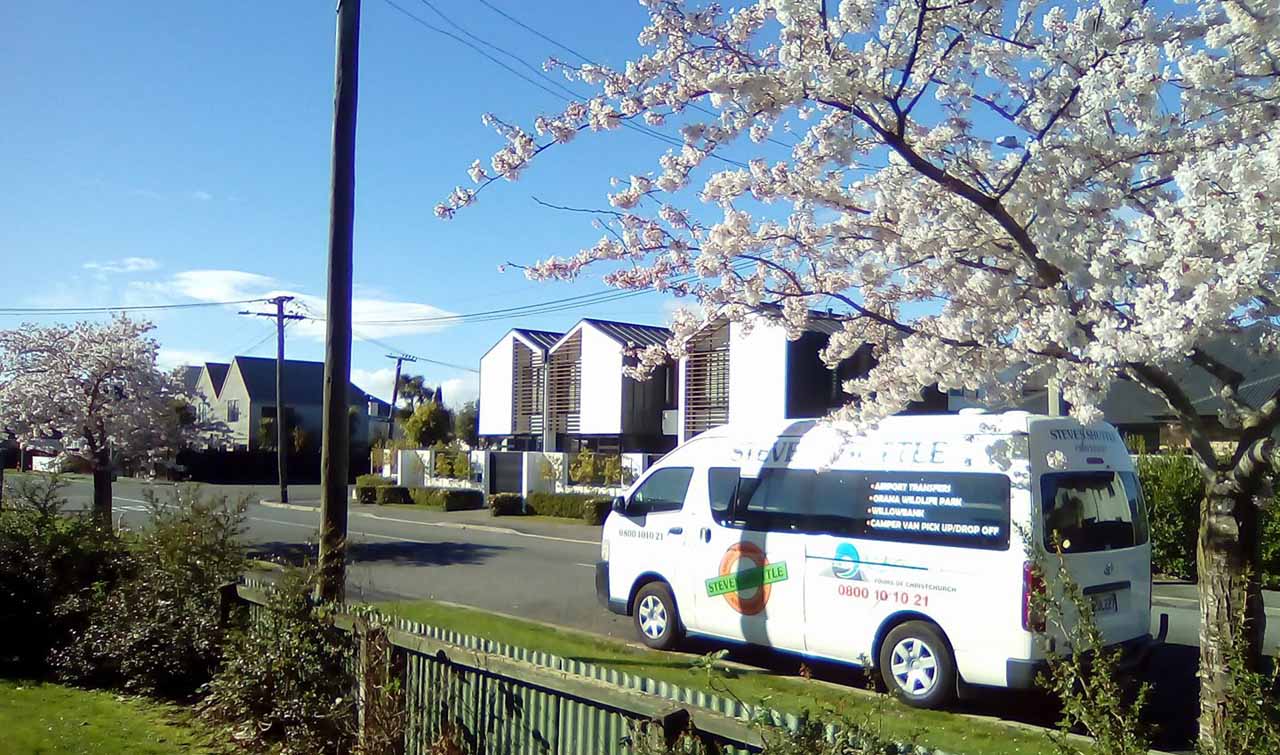
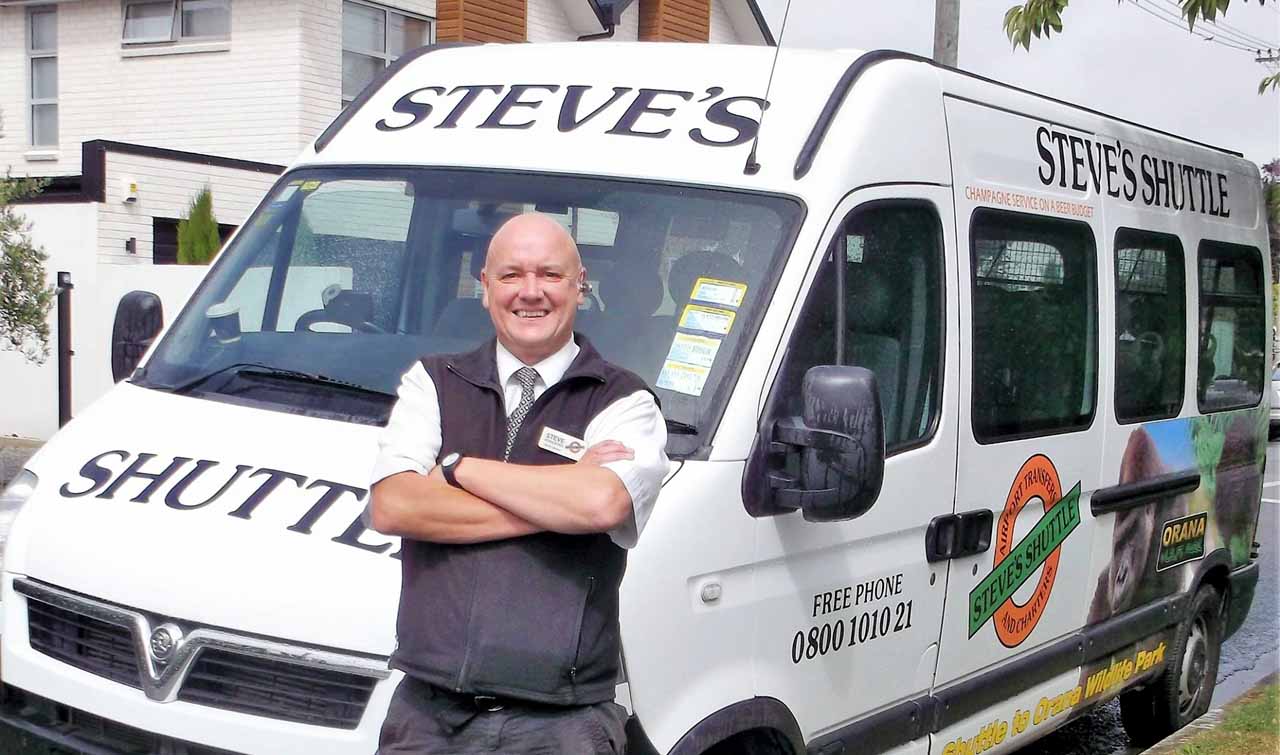
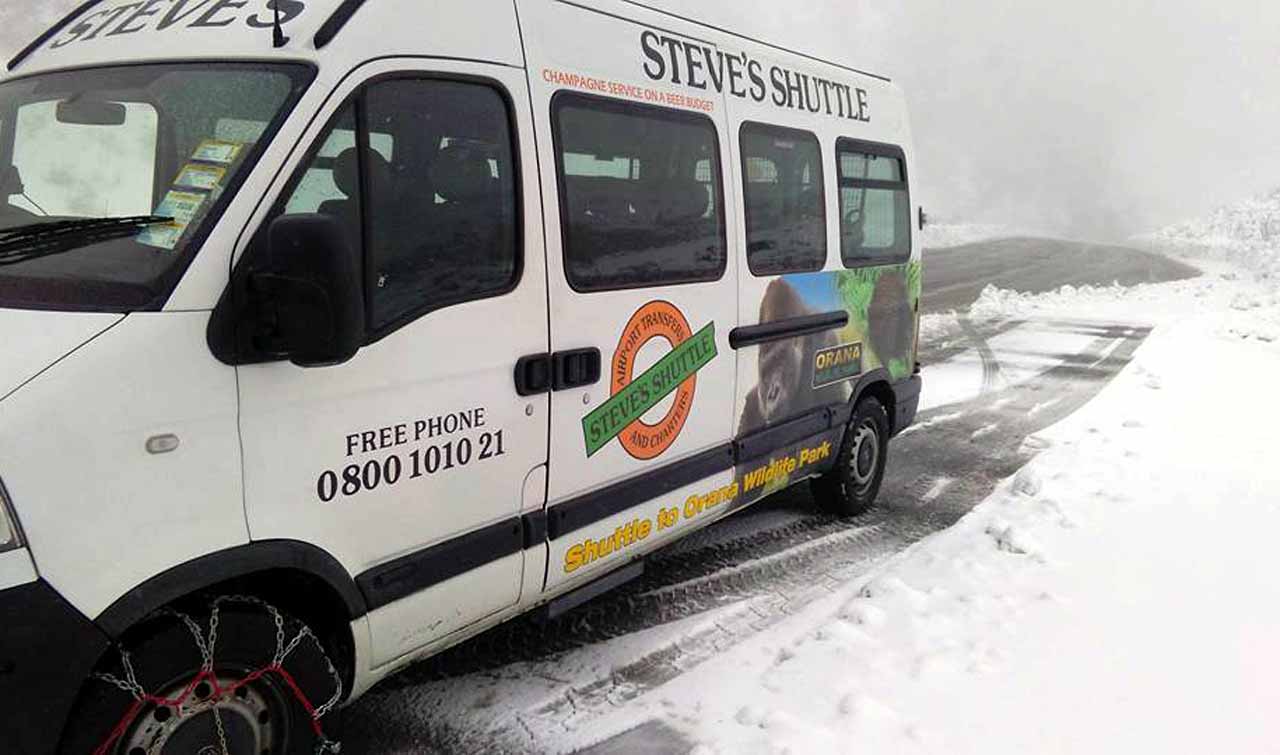
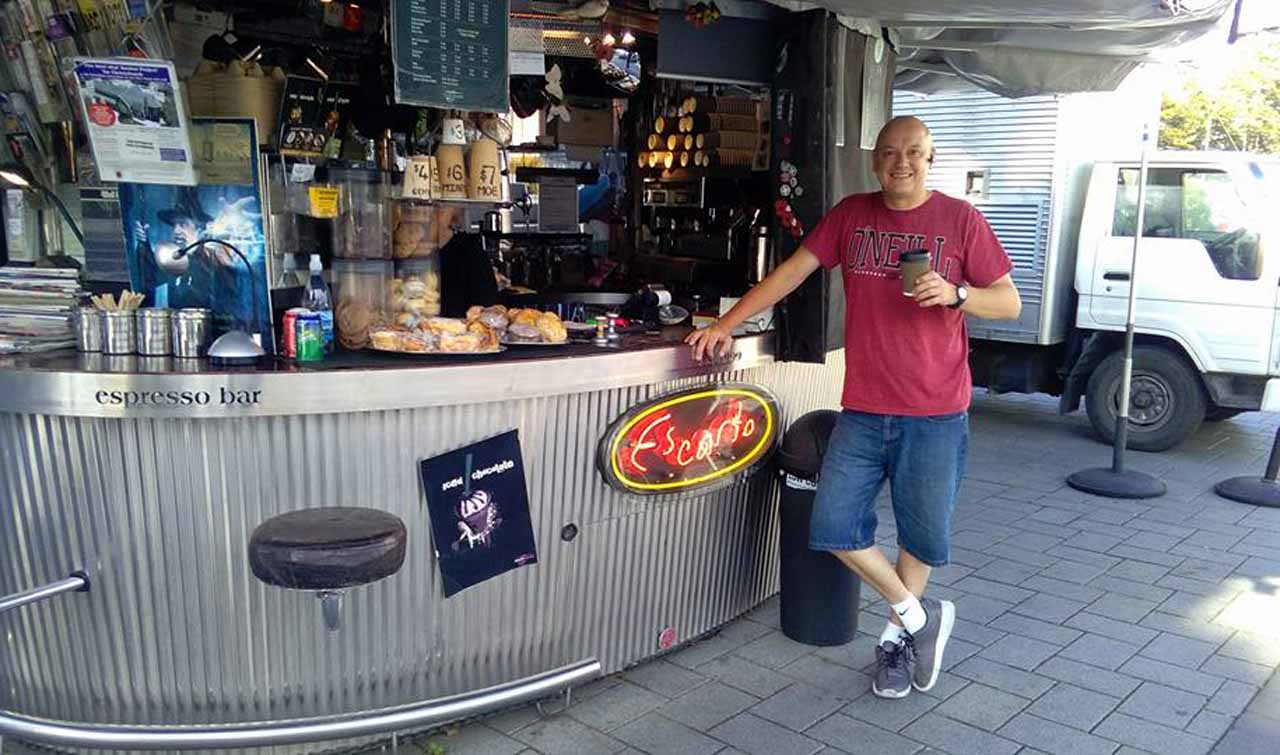
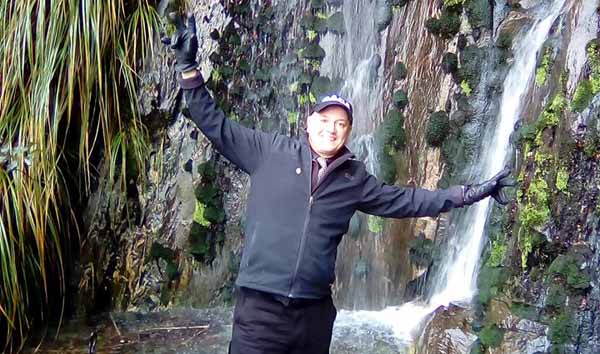
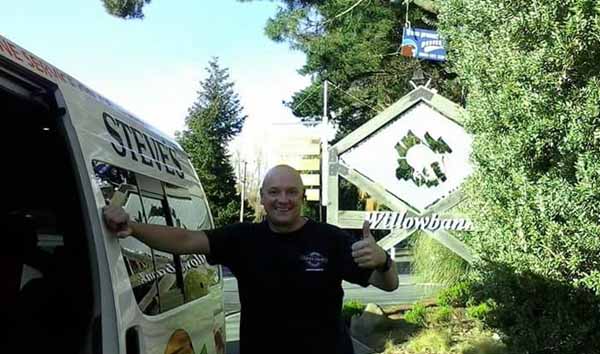
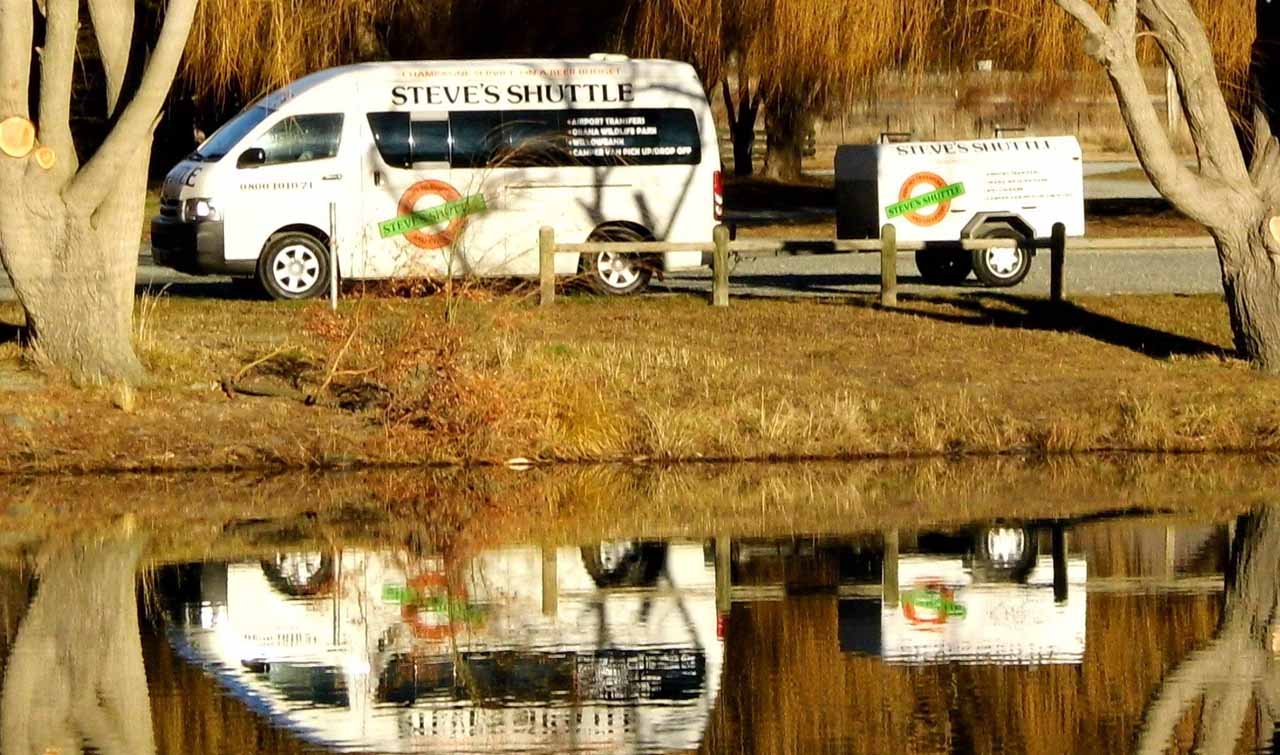
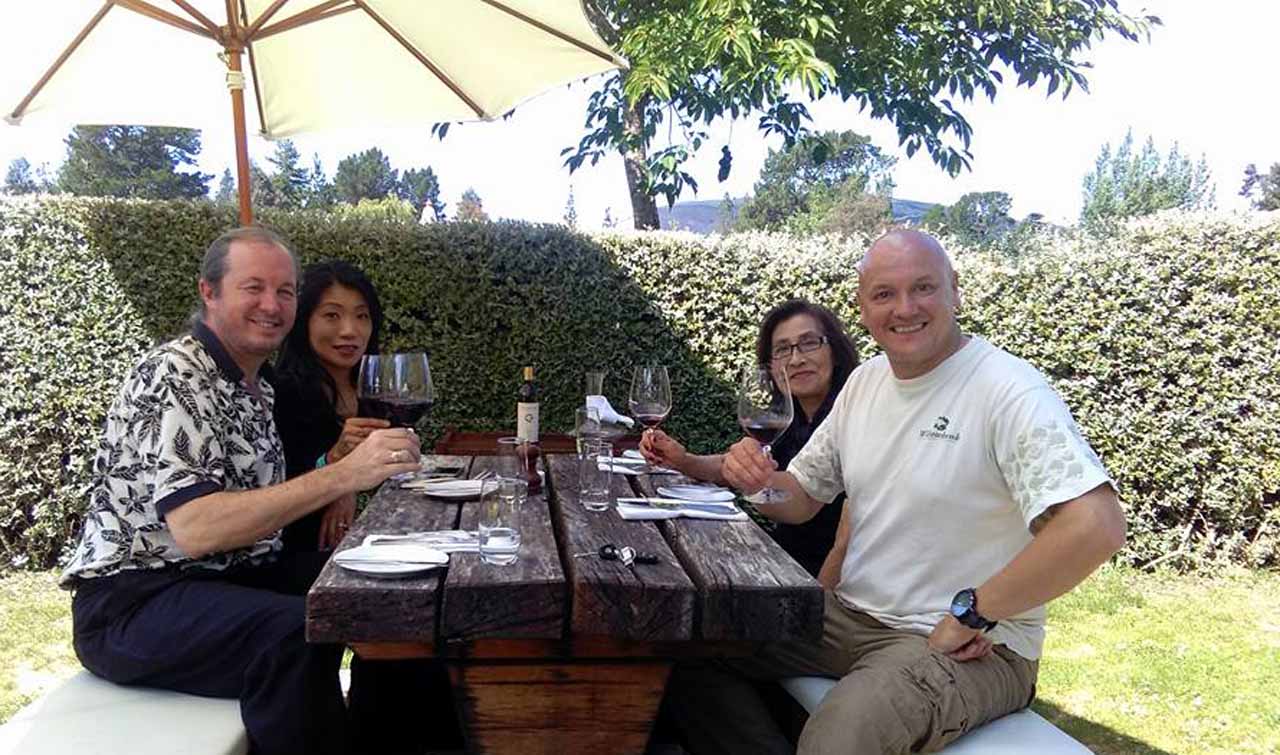
Copyright ©2018 Steve's Shuttle. Designed by Short Circuit Solutions.
